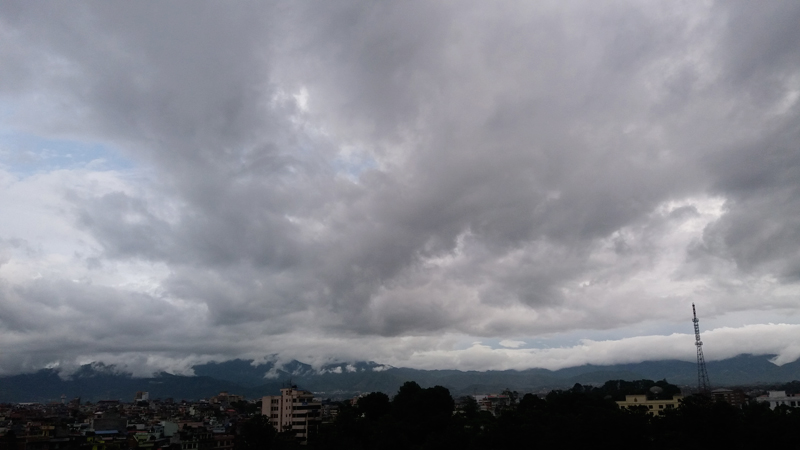Monsoon finally withdraws
Kathmandu, October 6
This year’s monsoon, which had already withdrawn from the western region of Nepal on October 1, has retreated from the remaining parts of the country.
The Meteorological Forecasting Division said in a special weather bulletin that the normal date of withdrawal of monsoon from Nepal was September 23 and hence this year the monsoon retreat was delayed by 12 days. According to statistics of the MFD, Kathmandu valley received a total of 1,142.3 mm rain this monsoon.
The month of June, July, August and September recorded 235.8 mm, 408.8 mm, 399.5 mm, 98.2 mm rain which the FFD said was normal. The normal date of monsoon withdrawal from Nepal is September 23. As monsoon withdrawal starts from the western parts of the country, westerly winds replace easterly winds. According to MFD, it was the delayed monsoon retreat for the fifth consecutive year.
When there is considerable reduction in moisture content as shown by satellite images and no possibility of rainfall continuously for three days in a row, it can be termed as the sign of withdrawal of monsoon
In Nepal, monsoon generally remains active for 105 days but this year monsoon had an extended stay. Nepal recorded the longest monsoon in the year 2008. That year, monsoon stayed in the country for 130 days. Similarly, the second longest monsoon, which lasted for 128 days, was recorded in 2013.
According to the Department of Hydrology and Meteorology, the delay in monsoon retreat has been blamed on depression over the Bay of Bengal two weeks ago. Nepal receives an average of 80 per cent annual rainfall during the monsoon, which originates in the Bay of Bengal and moves along the southern flanks of the Himalayas. The average annual rainfall in Nepal is 1,600 mm, but it varies from place to place.






